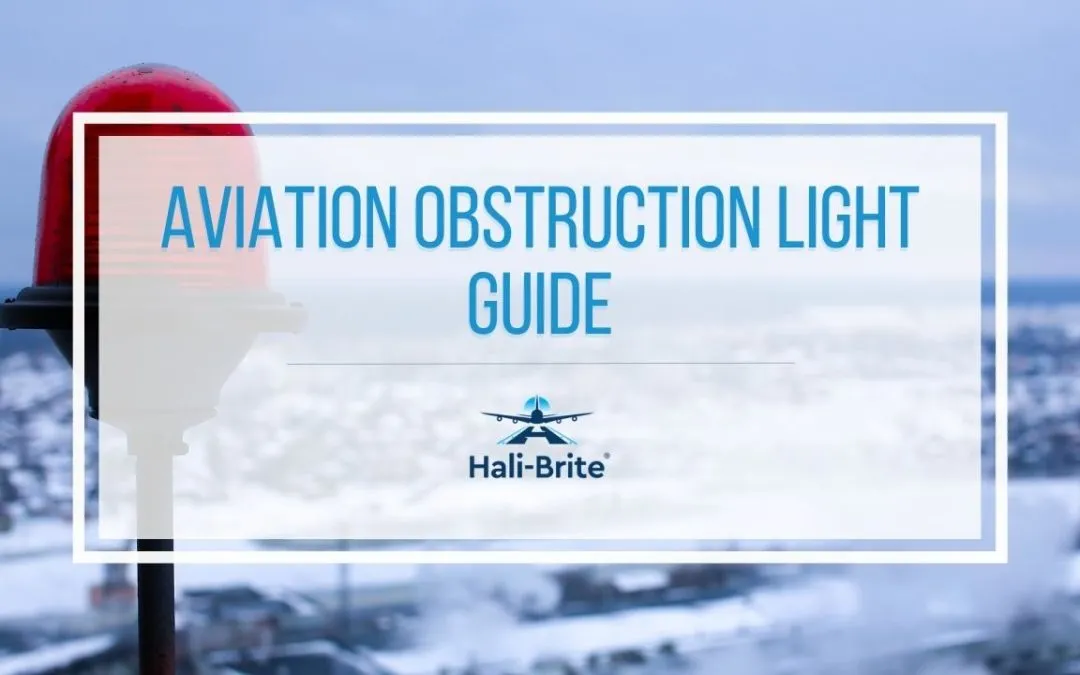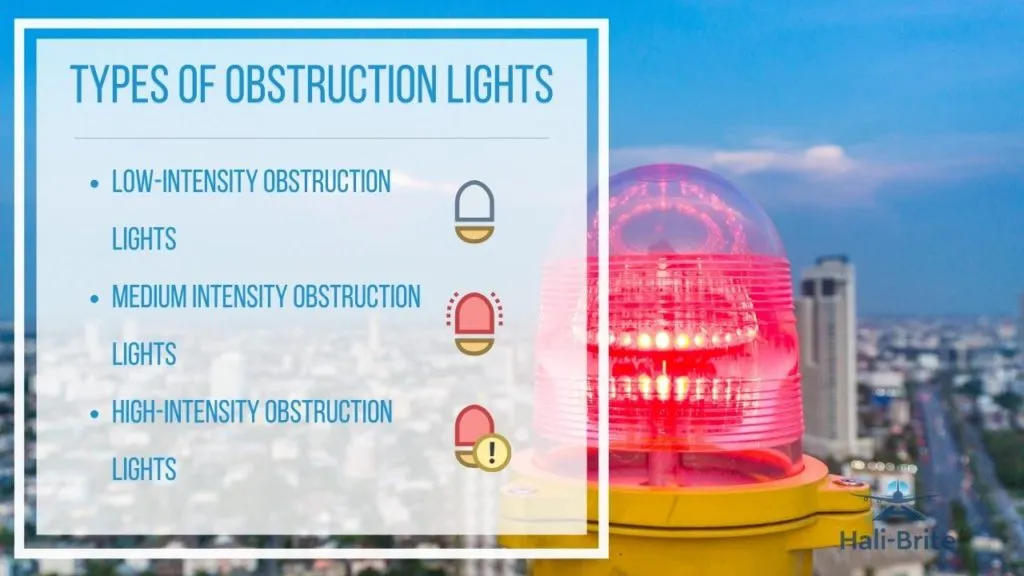Since air traffic has increased tremendously due to the advent of the jet setter lifestyle, the use of aviation obstruction lights (AOL) has transitioned from a mere recommendation to an important necessity. Aviation obstruction lights, also known as aircraft warning lights (AWL), are lighting devices installed on high structures that serve as collision prevention measures. Obstruction lights and obstruction markings allow pilots to safely navigate through areas with tall buildings, towers, or other obstacles during bad weather or low visibility.
There are plenty of interesting details about these light fixtures, and you will find all the information you need about them in this article.
Table of Contents
- A General Overview of Aviation Obstruction Lights Standards
- The Variety of Tower Obstruction Lighting
- Conclusion
A General Overview of Aviation Obstruction Lights Standards
Aviation Obstruction Lights are generally installed on buildings, towers, and even fences in regions where aircrafts may need to fly at low altitudes. These lights make objects visible to passing aircrafts and are typically used at night. However, obstruction lights can also be used during the day, especially when the weather is making visibility difficult. Because of their role in preventing collisions, aviation obstruction lights must be bright enough to be visible for miles around a tower or other obstruction designated structure. These lighting systems generally include one or more LED obstruction lights, or high-intensity strobe lights, that pilots can see from a considerable distance to maximize their visibility.
The Federal Aviation Administration (FAA) and the International Civil Aviation Organization (ICAO) set regulations and standards for aviation obstruction lights. According to International Regulations and National Standards, aircraft warning lights must also have specific attributes in light intensity, color, beam pattern, and the number of lights installed. The design of a structure’s aviation obstruction lights system will vary depending on the region’s geographical location, weather patterns, and local topographical features. The shape and layout of the building and other neighboring structures that require lighting are also considered.
Any structure higher than 200 feet above ground must be marked with aircraft warning lights. This condition means smokestacks, industrial chimneys, water tanks, windmills, turbines, cranes, pylons, broadcast masts, and towers should have these lighting systems if they exceed the 200 feet threshold.
Types of Lights
There are three types of obstruction lights used with different intensity levels depending on the structure’s height. These are
- Low-Intensity Obstruction Lights: This type of light is also known as the L810 obstruction light. These lights should be utilized when the object’s height above the surrounding ground is less than 147.6 feet or 45 meters.
- Medium Intensity Obstruction Lights: There are two types of medium intensity lights – the flashing red L-864 and the flashing white L-865. They are mostly used with obstructions ranging in height from 344.4 to 492 feet (or 105 to 150 meters).
- High-Intensity Obstruction Lights: Finally, the last type of light is utilized for all objects exceeding 500 feet or 150 meters.
The Variety of Tower Obstruction Lighting
When it comes to radio and telecommunication towers, obstruction lighting specific parameters must be followed for determining the number of lights on a structure, their configuration, and more. This is due to aviation warning lights regulations. The following contains examples of obstruction lighting parameters:
- The positioning of the obstruction lights should be set so that the lights can be seen from any angle in azimuth – meaning, the direction from which the sunlight is coming.
- The height of the tower will determine the number of lights needed.
- The arrangement of the lights must give a clear definition of the tower’s shape.
- The number of lights at each tower level will depend on its width and length.
Aircraft Warning Lights Markings
The intensity and amount of lights to use will depend on the time of day when it is used and the necessary color. There are three options, and they are
- Lit at night with a red light
- Lit during the day and night with white light
- Lit during the day with white and red light during the night
Here are the parameters for each of these lighting conventions:
Nighttime Red Light Tower
| Height of the Tower | Levels and Intensity (B Type) |
| Less than 147ft/45m | Only one level of low-intensity lights |
| Between 147ft/45m and 344ft/105m | Two levels:
Low to medium intensity lights at the 147ft/45m mark Medium intensity lights at the top of the tower |
| Between 344ft/105m and 688 ft/210 m | Four levels:
Low to medium intensity lights at the 147ft/45m mark and between the 344ft/105m mark and the top of the tower (Levels 1 and 3). Medium intensity lights at the 344ft/105m mark and the top of the tower (level 2s and 4) |
Day and Night White Light Tower
| Height of the Tower | Levels and Intensity (A Type) |
| Less than 344ft/105m | Only one level of medium intensity lights |
| Between 344ft/105m and 688ft/210m | Two levels:
Medium intensity lights at the 344ft/105m level and the top of the tower |
| Between 688ft/210m and 1033ft/315m | Three levels:
Medium intensity lights at all levels |
Daytime White Light/Nighttime Red Light Tower
| Height of the Tower | Levels and Intensity |
| Less than 344ft/105m | Two levels:
Low to medium intensity lights at the 147ft/45m mark Medium intensity lights at the top of the tower |
| Between 344ft/105m and 688ft/210m | Four levels:
Low to Medium intensity lights at the 147ft/45m mark and between the top of the tower and the 344ft/105m mark (Levels 1 and 3) Medium intensity lights at the 344ft/105m mark and the top of the tower (Levels 2 and 4) |
Conclusion
After reading this article, we hope that you now understand why aviation obstruction lights are vital in alerting pilots of potential hazards on the aircraft’s path. At Hali-Brite, we know global aviation regulations like the back of our hands. With our expert knowledge and extensive experience in ensuring flight safety, we are confident in supplying our clients with a diverse range of aircraft warning lights that are reliable, of quality, and cost-efficient. Contact us to get a free quote today.


